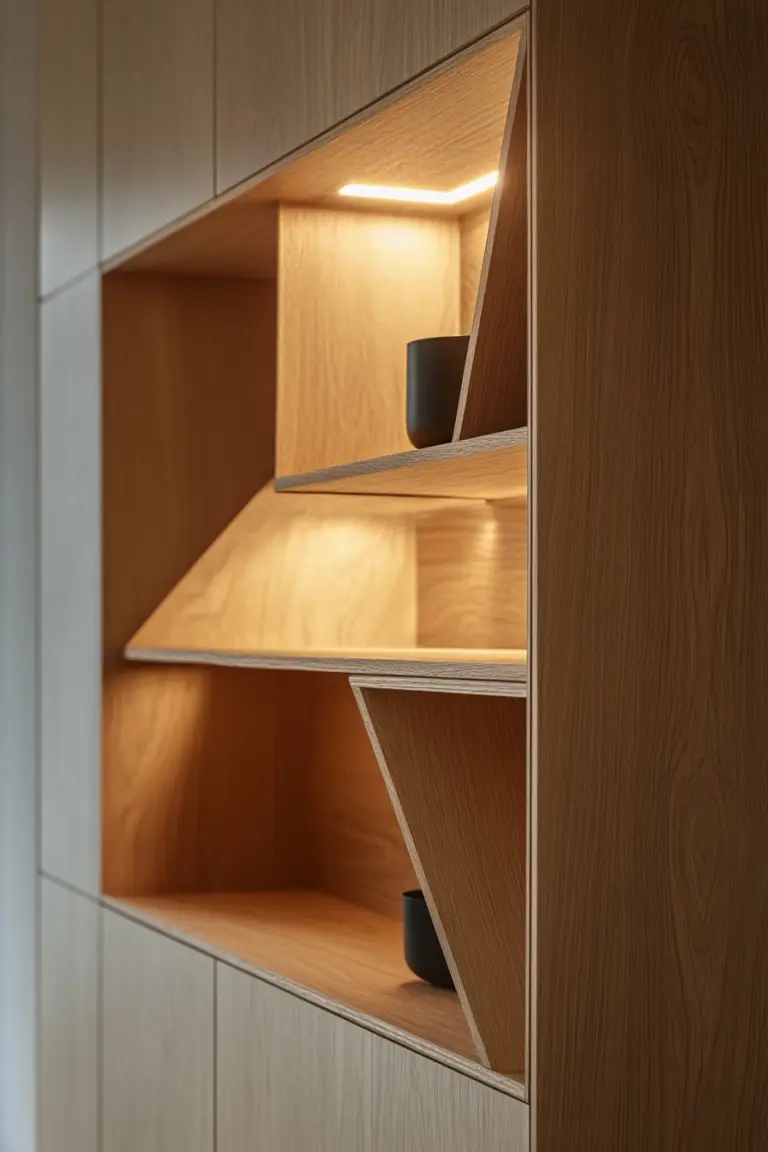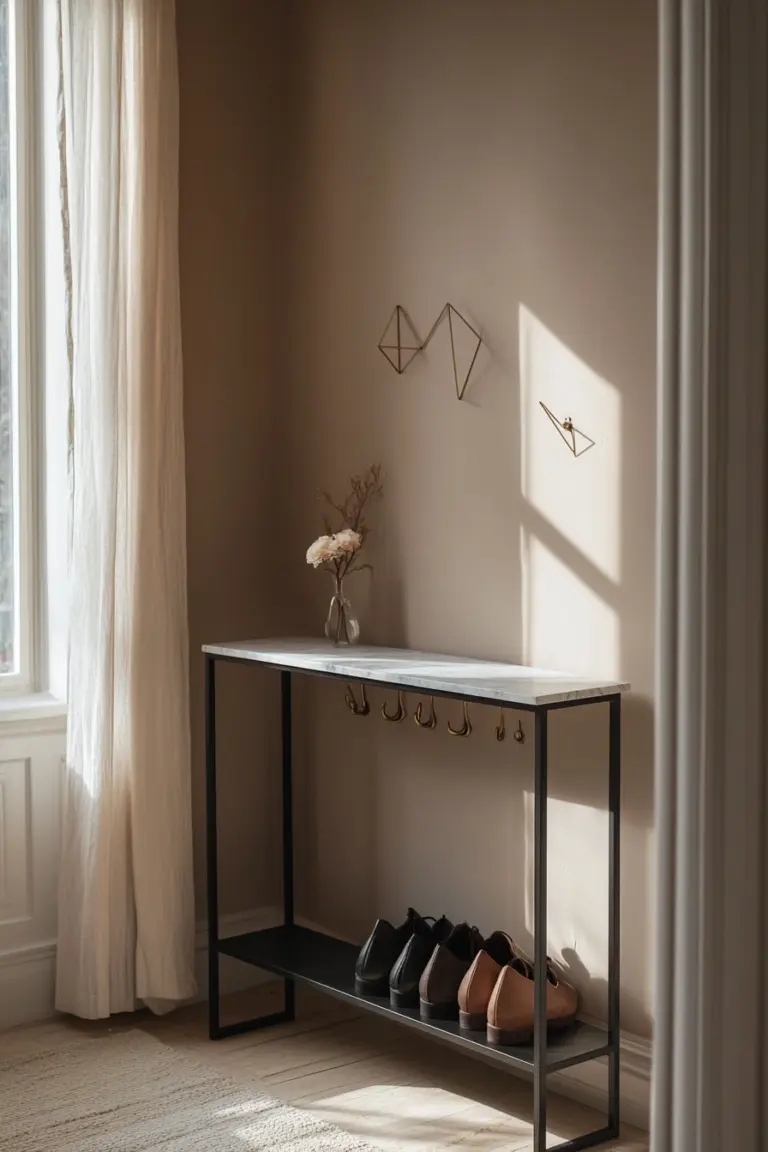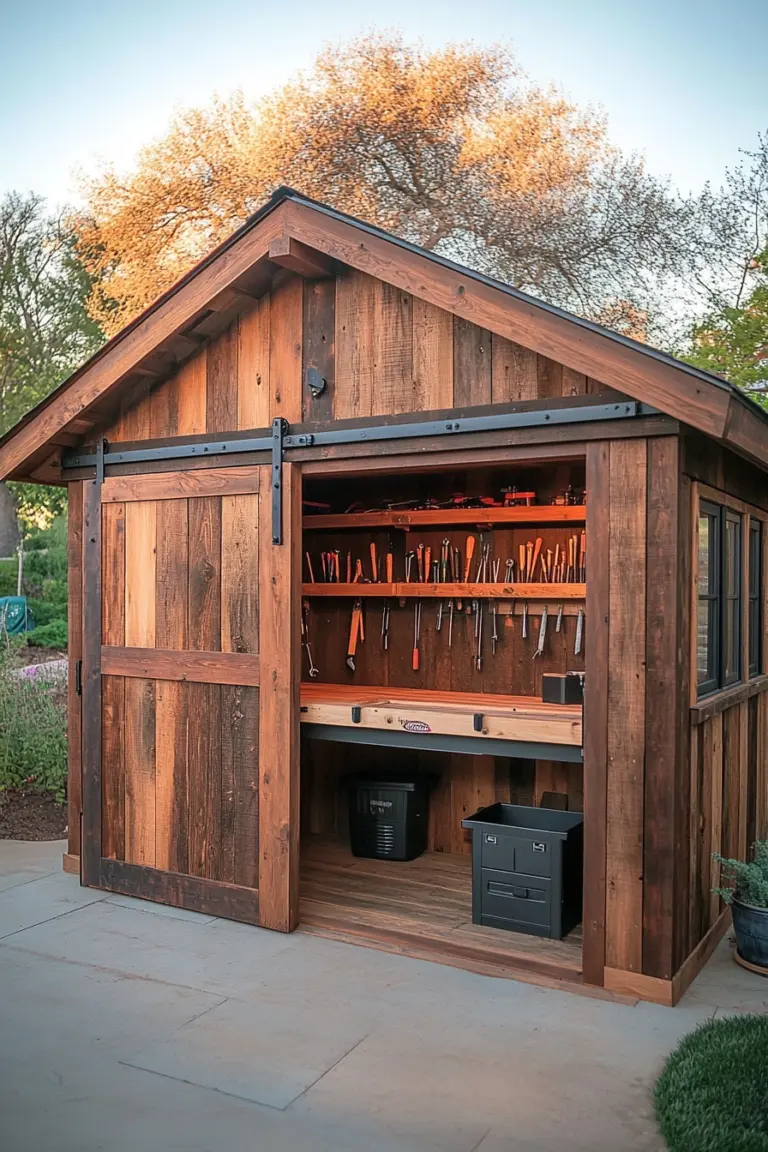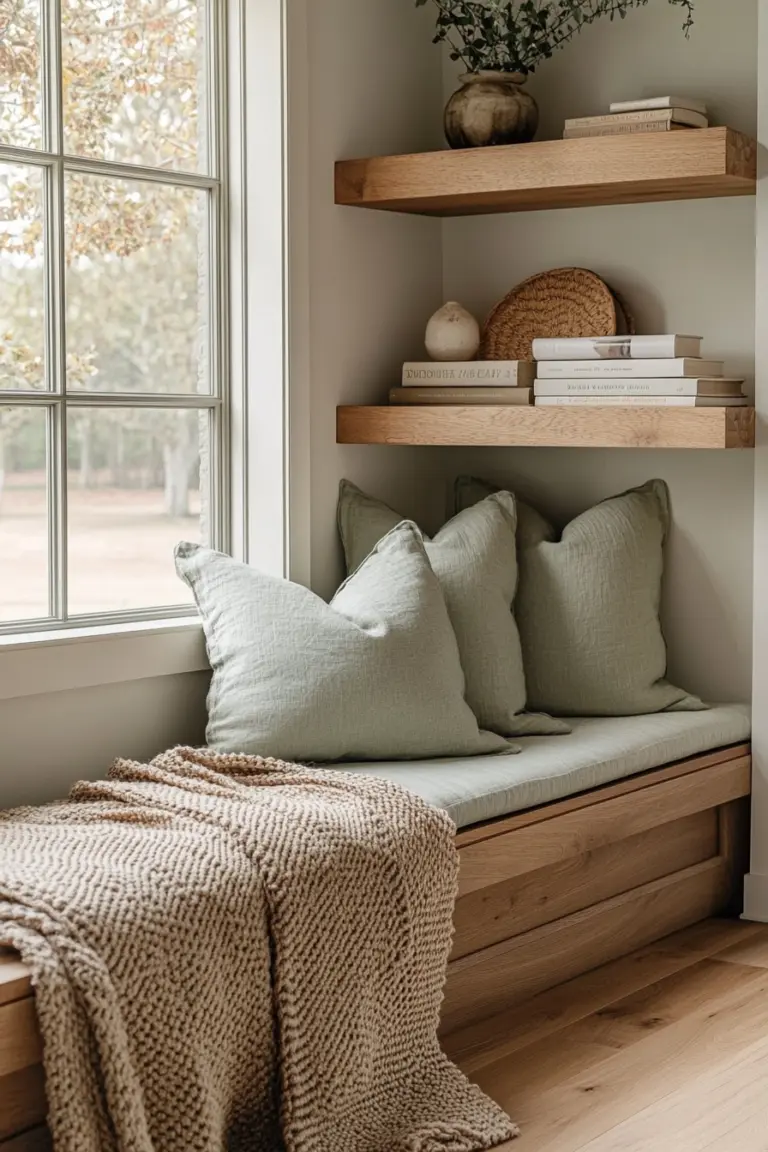Small Cottage Garden Ideas
Creating a small cottage garden is not just about planting flowers; it’s about crafting a serene escape that reflects your personality and offers a sanctuary from the hustle and bustle of everyday life. The beauty of a cottage garden lies in its ability to blend functionality with charm, making it a perfect retreat for relaxation, gardening, or entertaining guests.
Thoughtful interior design plays a crucial role in transforming these spaces into inspiring environments that resonate with the inhabitants’ lifestyles. With a myriad of themes and styles, from rustic to modern, these garden concepts cater to different tastes, ensuring that there is something for everyone.
This article explores twenty unique small cottage garden ideas, each designed to evoke a sense of beauty and tranquility. Whether you’re looking to cultivate herbs, create a whimsical retreat for children, or develop a wildlife habitat, these concepts will inspire you to make the most of your garden space.
Let’s dive into the enchanting world of cottage gardens that promise both aesthetic appeal and functional use.
1. Charming Small Cottage Garden with Vertical Herb Garden


This delightful small cottage garden features a vertical herb garden mounted on a weathered wooden fence, offering a rustic yet functional element to the design. Terracotta pots filled with fragrant lavender and rosemary line the stone pathway, inviting you to explore the lush greenery.
The English countryside style is prominent here, with soft morning light filtering through the plants, highlighting their textures and colors. The overall composition is natural and organic, creating an inviting atmosphere that encourages you to spend time outside.
The choice of materials is key to this garden’s charm; the weathered wood of the fence adds character while providing a perfect backdrop for the vibrant herbs. The rustic stone pathway guides you through the garden, making it easy to navigate while adding a touch of old-world charm.
The soft morning light enhances the colors of the plants, creating a warm and welcoming environment.
- Incorporate vertical gardening for space-saving herb options.
- Use terracotta pots to add earthy tones and textures.
- Choose aromatic plants like lavender and rosemary to enhance sensory experience.
- Utilize a rustic stone pathway for a charming, natural feel.
- Position the garden where it can receive ample sunlight, especially in the morning.
Pro Design Tip: To keep the vertical herb garden thriving, consider drip irrigation or self-watering pots to minimize maintenance while ensuring your herbs flourish.
Budget Consideration: Vertical gardening systems can be quite affordable, especially when using reclaimed wood or even repurposed pallets for the structure.


2. Compact Cottage Garden Design with Raised Wooden Garden Beds


This compact cottage garden showcases raised wooden garden beds bursting with mixed perennial plantings, providing an abundance of color and texture. Climbing roses cascade over a white trellis, adding a touch of romance to the space.
The vintage metal watering can is a charming decorative element that reflects the gardener’s passion for nurturing plants. The woven willow border not only enhances the aesthetic but also serves as a natural boundary for the garden beds, creating a sense of structure without overpowering the organic feel.
Natural sunlight filters through the plants, highlighting their vibrant colors and intricate details. The raised beds not only make gardening more accessible but also create a layered effect that draws the eye throughout the garden.
The combination of perennial plants ensures that there is always something in bloom, providing year-round interest and beauty.
- Utilize raised garden beds to improve accessibility and drainage.
- Choose a variety of perennial plants for long-lasting blooms.
- Incorporate climbing plants like roses for vertical interest.
- Use vintage or rustic accessories to add character to the garden.
- Implement natural borders like willow to frame your beds stylishly.
Pro Design Tip: Opt for a rainwater collection system to water your garden sustainably, ensuring your plants receive the care they need without wasting resources.
Budget Consideration: Building raised beds can be done on a budget using salvaged wood or even concrete blocks, making it an accessible project for many gardeners.


3. Intimate Cottage Garden Courtyard


This intimate cottage garden courtyard is designed for relaxation and enjoyment, featuring gravel pathways that meander through compact boxwood hedges. Hanging basket planters add vertical interest, bursting with pastel hydrangeas that soften the space with their gentle hues.
The wrought iron garden furniture provides a comfortable nook to unwind, while soft diffused lighting creates a serene ambiance, perfect for evening gatherings or quiet reflection.
The choice of gravel for the pathways enhances the rustic charm while providing excellent drainage. The boxwood hedges create a private enclosure, making the courtyard feel like a hidden oasis.
The vibrant pastel hydrangeas contrast beautifully against the greenery, adding a pop of color without overwhelming the senses.
- Incorporate gravel for pathways to enhance drainage and reduce maintenance.
- Use compact hedges for privacy and structure within the garden.
- Opt for hanging planters to add verticality and visual interest.
- Choose comfortable garden furniture to encourage relaxation.
- Utilize soft lighting for an inviting evening atmosphere.
Pro Design Tip: Consider adding a small fire pit or outdoor heater to extend the use of your courtyard into cooler months, creating a year-round retreat.
Budget Consideration: Creating a gravel pathway is relatively inexpensive and can be done with minimal tools, making it a great DIY project for any budget.


4. Hillside Small Cottage Garden


This hillside small cottage garden is a testament to sustainable design, featuring terraced stone retaining walls that create levels for various plantings. Cascading succulents thrive in this setting, blending seamlessly with native wildflower plantings that attract local pollinators.
Rustic wooden garden steps lead visitors through the vibrant landscape, while morning mist adds an ethereal quality to the scene, highlighting the beauty of nature in its simplest form.
The terraced walls not only prevent soil erosion but also create distinct planting areas that can be filled with a variety of textures and colors. The use of native wildflowers supports local biodiversity, making this garden not only beautiful but also ecologically responsible.
The interactions of light and shadow throughout the day create dynamic visual interest, ensuring that the garden remains captivating at all times.
- Implement terraced walls for functional plantings on sloped land.
- Choose native plants to promote biodiversity and sustainability.
- Incorporate rustic materials for a cohesive natural aesthetic.
- Use wooden steps for practicality while enhancing the garden’s charm.
- Position the garden to take advantage of natural sunlight and morning mist.
Pro Design Tip: Consider planting ground cover plants between the stone walls to enhance the natural look and reduce maintenance.
Budget Consideration: Building terraced walls can be a more significant investment, but using local stone can often reduce costs while enhancing the garden’s character.


5. Urban Cottage Garden on Small Balcony


This urban cottage garden transforms a small balcony into a vibrant oasis with a vertical succulent wall that maximizes space while offering an array of colors and textures. Hanging macramé plant holders add a touch of bohemian flair, while a compact bistro set provides a cozy dining space.
A collection of terracotta pots filled with trailing ivy completes the scene, creating an inviting atmosphere for outdoor relaxation during the golden hour, when the soft light casts a warm glow over the space.
The vertical wall not only serves as a striking focal point but also allows for a diverse range of plants in a limited area. The combination of hanging planters and pots provides layers of greenery that enhance visual interest.
This design showcases how urban dwellers can embrace gardening even in limited spaces by being creative and resourceful.
- Utilize vertical gardening techniques to maximize planting space.
- Incorporate hanging planters for added greenery without taking up floor space.
- Choose compact furniture that complements the garden aesthetic.
- Use terracotta pots for a classic, earthy look.
- Position seating areas to take advantage of sunset views.
Pro Design Tip: Use lightweight potting soil to reduce the overall weight on your balcony, ensuring safety and stability.
Budget Consideration: Vertical gardening systems can be crafted from inexpensive materials, allowing for a beautiful garden without breaking the bank.


6. Cottage Garden Meditation Corner


This serene cottage garden meditation corner features a zen-inspired rock garden, complete with a miniature Japanese maple that adds a calming presence. Smooth river stones create patterns that invite mindfulness, while a bamboo water feature provides gentle sounds of flowing water, enhancing the tranquil atmosphere.
Moss-covered surfaces and soft filtered light contribute to the peaceful vibe, making this corner an ideal retreat for reflection and relaxation.
The careful selection of materials enhances the zen aesthetic; smooth stones and soft moss create a tactile experience that engages the senses. The addition of a water feature introduces soothing sounds that promote relaxation, while the Japanese maple offers seasonal interest with its vibrant foliage.
- Incorporate natural elements like stone and wood for a calming atmosphere.
- Choose plants that provide seasonal interest and tranquility.
- Use water features for soothing sounds and a sense of serenity.
- Design pathways with smooth stones for visual and tactile appeal.
- Ensure the space receives soft, filtered light to enhance the calming environment.
Pro Design Tip: Consider using a solar-powered water feature to minimize maintenance and energy costs while enhancing your meditation corner.
Budget Consideration: Rock gardens can be budget-friendly, especially if you source stones locally or use recycled materials.


7. Pollinator-Friendly Cottage Garden


This vibrant pollinator-friendly cottage garden is designed to attract butterflies and bees, featuring a native wildflower meadow that bursts with color and life. A wooden bee hotel provides shelter for pollinators, while butterfly landing stones offer resting spots for these beautiful creatures.
Natural gravel paths wind through the garden, leading to a wooden arbor adorned with climbing jasmine that adds fragrance and beauty to the space.
The choice of native plants supports local ecosystems while providing a stunning display of color. The bee hotel and landing stones are not only functional but also serve as delightful focal points that engage visitors.
The combination of fragrant climbers and flowering plants creates a sensory experience that enhances the garden’s beauty.
- Choose native plants to support local pollinators and biodiversity.
- Incorporate features like bee hotels to create a habitat for beneficial insects.
- Design pathways with natural materials for a rustic feel.
- Use climbing plants to create vertical interest and fragrance.
- Plant in clusters to attract more pollinators effectively.
Pro Design Tip: Create a water source, such as a shallow dish with pebbles, to provide bees and butterflies with hydration, enhancing their activity in your garden.
Budget Consideration: Many native plants are often less expensive and require less maintenance once established, making them a cost-effective choice.


8. Cottage Garden Kitchen Herb Spiral


This functional cottage garden features a kitchen herb spiral made from reclaimed stone, designed with multiple levels for various culinary herbs. The integrated composting area provides nutrient-rich soil to support the healthy growth of the plants.
Rustic wooden edging frames the spiral, while morning sunlight enhances the colors and textures of the herbs, inviting you to reach in and harvest fresh flavors for your meals.
The spiral design is not only visually appealing but also maximizes space and allows for better drainage and sunlight exposure for each herb variety. The use of reclaimed materials adds character and sustainability to the garden, promoting environmental consciousness while enhancing its beauty.
- Implement a spiral design to maximize growing space and efficiency.
- Use reclaimed materials to enhance sustainability and character.
- Integrate a composting area for nutrient-rich soil.
- Choose herbs that thrive in varying sunlight conditions for diverse culinary use.
- Position the spiral to receive maximum sunlight throughout the day.
Pro Design Tip: Consider companion planting within the spiral to enhance growth and deter pests naturally.
Budget Consideration: Building a herb spiral can be done affordably by sourcing reclaimed materials from local builders or DIY stores.


9. Compact Cottage Garden with Espaliered Fruit Trees


This delightful compact cottage garden features espaliered fruit trees trained against a brick wall, maximizing vertical space while producing delicious fruit. Raised vegetable beds provide additional growing opportunities, while decorative metal garden obelisks offer support for climbing plants and create visual interest.
Vintage terracotta planters add a rustic touch, enhancing the garden’s overall charm.
The espaliered trees not only produce fruit but also serve as a beautiful focal point against the brick wall, creating a stunning backdrop for the rest of the garden. The combination of raised beds and vertical growing techniques ensures that every inch of space is utilized effectively, providing a productive and attractive garden.
- Train fruit trees against walls for efficient use of vertical space.
- Incorporate raised vegetable beds for easy access and better drainage.
- Use decorative obelisks to support climbing plants while adding style.
- Select vintage planters to enhance the rustic aesthetic.
- Ensure good sunlight exposure for optimal fruit production.
Pro Design Tip: Consider using a drip irrigation system to efficiently water your espaliered trees and vegetable beds, promoting healthy growth.
Budget Consideration: Espaliered trees can often be purchased at a lower price when bought from local nurseries or through community gardening programs.


10. Cottage Garden Water Conservation Design


This innovative cottage garden focuses on water conservation, featuring drought-tolerant plants and gravel xeriscaping that enhances the landscape while minimizing water usage. A rainwater collection barrel is an essential element, collecting water for irrigation while native succulents thrive in the warm afternoon light.
Stone pathways wind through the garden, creating a natural flow and enhancing the overall aesthetic.
By selecting drought-tolerant plants, this garden not only conserves water but also showcases a beautiful variety of textures and colors. The rainwater collection system is a sustainable feature that allows for efficient watering, making it an eco-friendly choice for environmentally conscious gardeners.
- Select drought-tolerant plants for sustainability and low maintenance.
- Incorporate gravel for xeriscaping to reduce water consumption.
- Use a rainwater collection system to promote efficient irrigation.
- Design pathways with stone for a natural and sturdy surface.
- Position the garden to maximize sunlight exposure for drought-resistant plants.
Pro Design Tip: Group plants with similar water needs together to further enhance water conservation efforts and simplify maintenance.
Budget Consideration: Many drought-tolerant plants are often less expensive to maintain due to their low water needs, making them an economical choice.


11. Romantic Cottage Garden Seating Area


This romantic cottage garden seating area features a wrought iron bench nestled under a climbing rose archway, creating a perfect spot for quiet moments and intimate gatherings. A lavender border adds fragrance and color, while antique garden accessories bring a touch of nostalgia to the setting.
The soft pastel color palette enhances the romantic feel, especially during the golden hour when the light casts a warm glow over the garden.
By positioning the seating area under the rose arch, the design creates a natural framing that draws attention to the beauty of the flowers. The lavender border not only provides visual interest but also attracts pollinators, enhancing the garden’s ecosystem.
This space is designed for comfort and relaxation, inviting you to enjoy the surrounding beauty.
- Incorporate comfortable seating for relaxation and enjoyment.
- Use climbing plants for vertical interest and beauty.
- Choose fragrant plants like lavender to enhance sensory experiences.
- Utilize antique accessories to add charm and nostalgia.
- Position seating areas strategically to maximize views and comfort.
Pro Design Tip: Add soft cushions and throws to the bench for added comfort and to encourage longer stays in your romantic garden retreat.
Budget Consideration: Antique accessories can often be found at thrift stores or flea markets, making it easy to create a charming atmosphere on a budget.


12. Multi-Level Cottage Garden with Wooden Deck


This multi-level cottage garden features a beautifully crafted wooden deck that serves as a central gathering space, surrounded by container vegetable gardens and hanging herb planters. A compact composting station is conveniently located nearby, promoting sustainability while providing rich soil for the plants.
Recycled garden art decorates the space, adding a whimsical touch to the garden’s overall aesthetic, especially in the natural morning light.
The multi-level design provides visual interest and allows for a variety of plantings, making efficient use of space. Container gardens are perfect for urban settings, allowing gardeners to grow their favorite vegetables and herbs without a traditional garden bed.
The wooden deck serves as an inviting area for socializing, cooking, or simply enjoying the garden.
- Create levels in your garden for visual interest and diverse plantings.
- Utilize containers for easy access and flexibility in planting.
- Incorporate a composting station for sustainable gardening.
- Use recycled materials for garden art to enhance creativity.
- Position your deck to take advantage of sunlight and views.
Pro Design Tip: Consider using vertical planters on the deck to maximize space and add greenery without sacrificing floor area.
Budget Consideration: Building a deck can vary in cost, but using reclaimed wood can significantly reduce expenses while adding character.


13. Cottage Garden Shade Garden


This tranquil cottage garden shade garden features lush ferns and hostas that thrive in dappled sunlight, creating a serene atmosphere perfect for relaxation. Moss-covered stones add texture and interest, while a rustic wooden bridge spans a small stream, enhancing the natural setting.
The woodland path invites exploration, leading visitors through a magical landscape where each turn reveals new surprises.
Shade gardens can be just as vibrant and appealing as sun-drenched spaces. The combination of ferns, hostas, and moss creates a lush, green tapestry that feels cool and refreshing.
The rustic bridge adds a charming touch while providing a functional element that enhances the garden’s flow.
- Choose shade-tolerant plants for lush, vibrant greenery.
- Incorporate textured elements like moss-covered stones for added interest.
- Design pathways that invite exploration and discovery.
- Use rustic materials for bridges and paths to enhance natural aesthetics.
- Position plants to create layers and depth in your shade garden.
Pro Design Tip: Group plants with similar moisture needs together to simplify care and enhance plant health.
Budget Consideration: Many shade-loving plants can be propagated from cuttings, making them an economical option for expanding your garden.


14. Modern Minimalist Cottage Garden


This modern minimalist cottage garden features geometric raised beds filled with architectural succulents, creating a clean and contemporary look. A monochromatic stone pathway guides visitors through the space, while metal garden sculptures add artistic flair without cluttering the design.
The overall aesthetic is defined by clean lines and soft natural lighting, making the garden a peaceful retreat that embraces simplicity and elegance.
The use of geometric shapes in the raised beds offers a striking contrast against the organic forms of the succulents. Monochromatic stone pathways enhance the minimalist feel while providing a sturdy and stylish surface.
This design is perfect for those who appreciate a modern aesthetic without sacrificing the beauty of nature.
- Utilize geometric shapes for raised beds to create a modern aesthetic.
- Choose architectural plants like succulents for visual impact.
- Incorporate monochromatic materials for pathways to enhance simplicity.
- Use metal sculptures to add artistic elements without overwhelming the design.
- Maximize natural lighting to create a bright and inviting atmosphere.
Pro Design Tip: Keep maintenance minimal by selecting low-water plants and using a mulch layer to suppress weeds in minimalist gardens.
Budget Consideration: Many succulents are low-cost and can be propagated, making them an economical choice for modern gardens.


15. Cottage Garden Sensory Design


This sensory cottage garden design engages all five senses, featuring textured plants, wind chimes that tinkle in the breeze, fragrant herbs that invite touch and smell, and smooth stones that provide tactile experiences. A gentle water feature adds soothing sounds, while soft morning mist enhances the sensory journey.
This garden is designed to be an immersive experience, encouraging visitors to interact with their surroundings.
The thoughtful selection of plants and features ensures that this garden provides sensory delight throughout the seasons. The combination of textures, sounds, and scents creates an inviting environment that encourages exploration and mindfulness, making it perfect for relaxation or meditation.
- Incorporate a variety of textures for visual and tactile appeal.
- Use fragrant plants to enhance the sensory experience.
- Include calming sounds with water features or wind chimes.
- Position smooth stones for tactile engagement.
- Design pathways that encourage exploration and interaction.
Pro Design Tip: Consider planting herbs with different textures and scents to create an engaging sensory experience that evolves with the seasons.
Budget Consideration: Many sensory plants can be grown from seeds, making them an affordable option for enhancing your garden.


16. Winter-Resistant Cottage Garden


This winter-resistant cottage garden features evergreen plantings and decorative ornamental grasses that provide year-round interest. Rock garden elements are incorporated for texture and stability, while a rustic wooden garden screen offers privacy and shelter from harsh weather.
Subtle winter lighting enhances the beauty of the garden during the colder months, creating a cozy and inviting atmosphere.
The use of evergreens ensures that the garden remains vibrant even in winter, while decorative grasses add movement and visual interest. The rustic garden screen not only enhances privacy but also serves as a beautiful backdrop for the winter landscape.
- Select evergreen plants for year-round greenery and interest.
- Incorporate ornamental grasses for movement and texture.
- Use rock elements to enhance stability and design interest.
- Position screens strategically to create sheltered areas.
- Utilize winter lighting to showcase the garden’s beauty during colder months.
Pro Design Tip: Consider using solar-powered lights to minimize energy costs while still enhancing the atmosphere of your winter garden.
Budget Consideration: Many evergreen plants are low-maintenance and can be sourced locally, making them a budget-friendly choice for winter gardens.


17. Cottage Garden Children’s Exploration Area


This cottage garden children’s exploration area is designed to engage young minds with sensory plant stations, miniature fairy garden elements, and educational plant labels. Interactive garden paths guide children through the space, and wooden learning structures encourage hands-on exploration and creativity.
Soft natural light filters through the plants, making this garden a playful environment full of discovery.
The design emphasizes interaction and learning, allowing children to engage with nature in a fun and educational way. By including sensory plant stations, children can experience different scents and textures, while the fairy garden elements invite imaginative play.
This garden is a wonderful way to foster a love for nature in young ones.
- Incorporate sensory plants for tactile exploration.
- Design pathways that encourage discovery and movement.
- Add educational elements like plant labels for learning opportunities.
- Include playful features like fairy gardens to stimulate imagination.
- Use natural materials for structures to enhance the organic feel.
Pro Design Tip: Encourage children to get involved in planting and caring for the garden, fostering a sense of responsibility and connection to nature.
Budget Consideration: Many plants can be grown from seeds, making it an affordable option to create engaging sensory experiences.


18. Mediterranean-Inspired Cottage Garden


This Mediterranean-inspired cottage garden is a feast for the senses, featuring terracotta pots filled with olive trees and rosemary hedges that create a warm and inviting atmosphere. Gravel pathways wind through the garden, bordered by rustic stone walls that enhance the Mediterranean aesthetic.
The warm afternoon sunlight bathes the space in golden hues, making it a perfect spot for relaxation and enjoying the beauty of nature.
The choice of plants and materials reflects the warm climate of the Mediterranean, ensuring that this garden is both beautiful and practical. The terracotta pots add an earthy element while allowing for easy mobility and arrangement.
The rustic stone walls provide structure and support, enhancing the overall charm of the garden.
- Choose drought-tolerant plants for sustainability and ease of care.
- Incorporate terracotta pots for an authentic Mediterranean feel.
- Design gravel pathways for low maintenance and good drainage.
- Use rustic stone walls for structure and aesthetic appeal.
- Position the garden to take advantage of sunlight for optimal growth.
Pro Design Tip: Use Mediterranean herbs like thyme and oregano in your planting to enhance the sensory experience and culinary potential of your garden.
Budget Consideration: Many Mediterranean plants are readily available and often less expensive, making them an economical choice for your garden.


19. Cottage Garden Wildlife Habitat


This cottage garden is designed as a wildlife habitat, featuring native plantings that provide food and shelter for local fauna. Bird feeding stations attract feathered friends, while insect hotels support beneficial insects.
A gentle water feature invites wildlife to visit, while natural stone elements create a beautiful and functional landscape that encourages biodiversity.
The selection of native plants ensures that the garden supports local ecosystems, while bird feeders and insect hotels create inviting spaces for wildlife. The gentle water feature not only serves as a hydration source but also adds a soothing sound element that enhances the garden’s atmosphere.
- Choose native plants to support local wildlife and biodiversity.
- Incorporate bird feeders to attract and support local birds.
- Use insect hotels to provide habitats for beneficial insects.
- Create a water source for wildlife to drink and bathe.
- Utilize natural elements for a harmonious garden design.
Pro Design Tip: Design your garden to include a variety of plants that bloom at different times of the year to provide continuous food sources for wildlife.
Budget Consideration: Many native plants are often available at low costs, making them an economical choice for creating a wildlife-friendly garden.


20. Compact Urban Cottage Garden Rooftop Design


This compact urban cottage garden rooftop design utilizes vertical gardening systems and modular planting containers to create a lush escape above the city. Integrated seating allows for relaxation while enjoying the city skyline backdrop, making it a perfect spot for socializing or unwinding after a long day.
Sunset lighting casts a warm glow over the garden, enhancing its vibrant colors and inviting ambiance.
The vertical gardening systems maximize space and allow for a diverse range of plants, while modular containers can be rearranged for seasonal interest. The rooftop garden serves as a sanctuary amidst urban life, providing a peaceful retreat where nature and city living coexist harmoniously.
- Utilize vertical gardening systems for efficient use of space.
- Incorporate modular containers for flexibility in design.
- Design seating areas to take advantage of views and sunset lighting.
- Choose plants that thrive in rooftop environments for successful growth.
- Position the garden for maximum sunlight exposure while offering shelter from wind.
Pro Design Tip: Consider lightweight soil mixes to reduce the overall weight of your rooftop garden, making it safer and easier to maintain.
Budget Consideration: Modular planting containers can often be sourced affordably, allowing for creative and flexible gardening solutions.


In conclusion, small cottage gardens are not only a reflection of personal style but also an opportunity to create functional and inviting outdoor spaces. From charming herb spirals to serene meditation corners, the ideas presented in this article offer a variety of approaches to designing your perfect garden.
Embrace creativity, sustainability, and the beauty of nature as you experiment with these concepts in your own home. With thoughtful planning and a little imagination, your small cottage garden can become a cherished haven that brings joy and tranquility to your life.






